Skool vs ClickFunnels: Community Building vs Sales Funnels (2025)
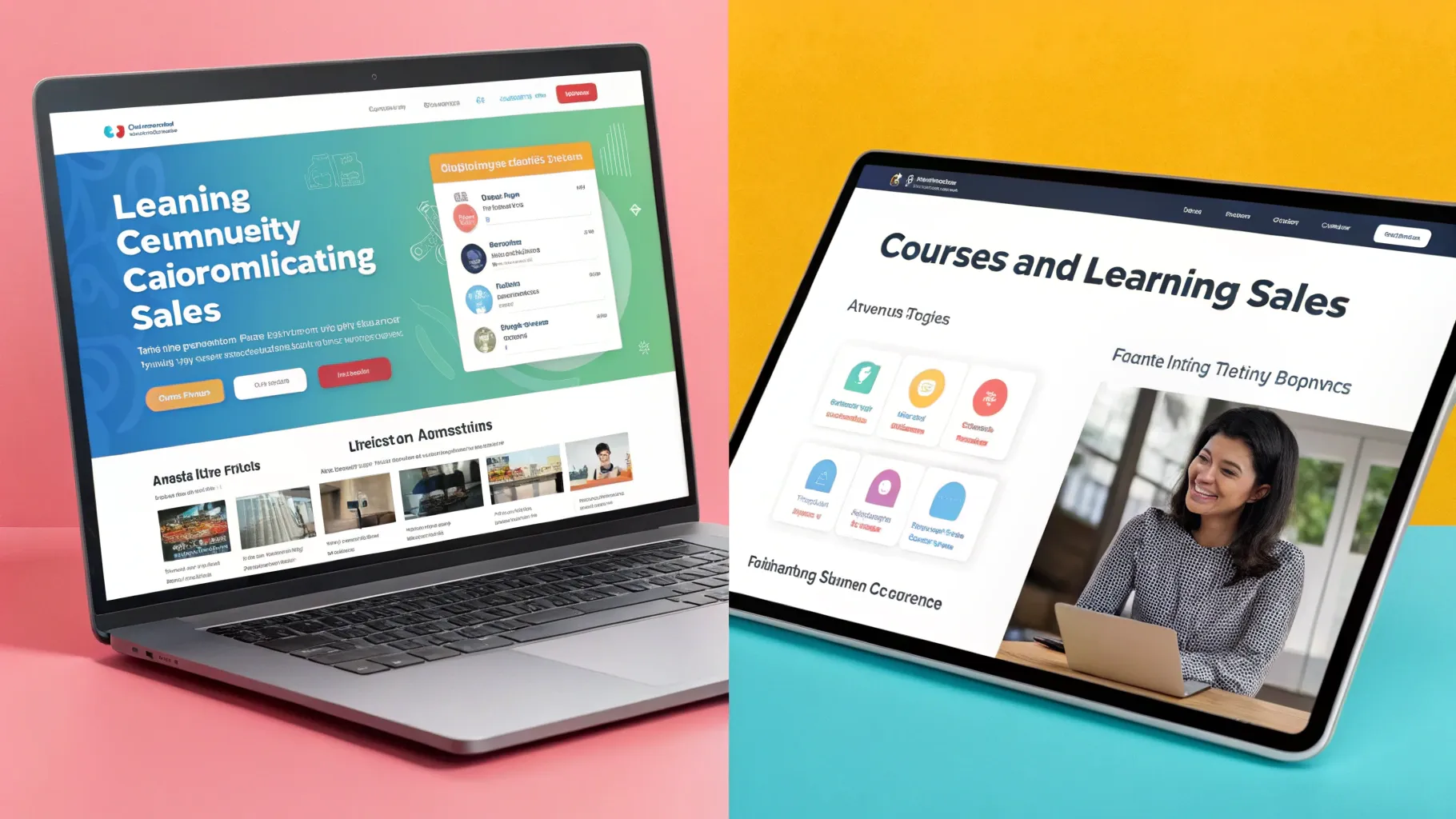
In the dynamic world of digital creation, course delivery, and online community building, choosing the right platform can be a game-changer. Whether you’re an educator, influencer, mentor, or entrepreneur, the decision between Skool vs Clickfunnels often comes down to how you want to engage your audience and monetize your content. Both platforms offer powerful tools but cater to different needs and objectives.
In this comprehensive guide, we’ll dive deep into the features, benefits, pricing, and real user experiences of Skool and Clickfunnels, helping you make an informed decision that suits your unique goals. This article is inspired by insights from George Vlasyev, a seasoned digital creator who has explored both platforms extensively.
Table of Contents
- Step 1: Understanding What Skool Is and Who It’s For
- Step 2: Skool Pricing – What Does It Cost?
- Step 3: Real User Experiences with Skool
- Step 4: Understanding Clickfunnels and Its Core Strengths
- Step 5: ClickFunnels Pricing – What Are Your Options?
- Step 6: Skool vs ClickFunnels – A Detailed Feature Comparison
- Step 7: Which Platform Should You Choose?
- Step 8: Getting Started – Tips for Signing Up
- Frequently Asked Questions (FAQ)
- Conclusion
Step 1: Understanding What Skool Is and Who It’s For
Skool is a relatively new platform, conceived by entrepreneur Sam Ovens, that aims to streamline the digital creator’s workflow by integrating course creation, community building, and subscription management into one cohesive environment. Designed with the modern educator, influencer, and mentor in mind, Skool offers a suite of tools that simplify content delivery while fostering a vibrant and interactive community.
At its core, Skool provides a holistic approach to online learning and engagement. It’s not just a course hosting platform — it’s a space where learning and discussion flourish side by side. This makes it ideal for creators who want to build a loyal, active audience that interacts regularly and feels part of a community.
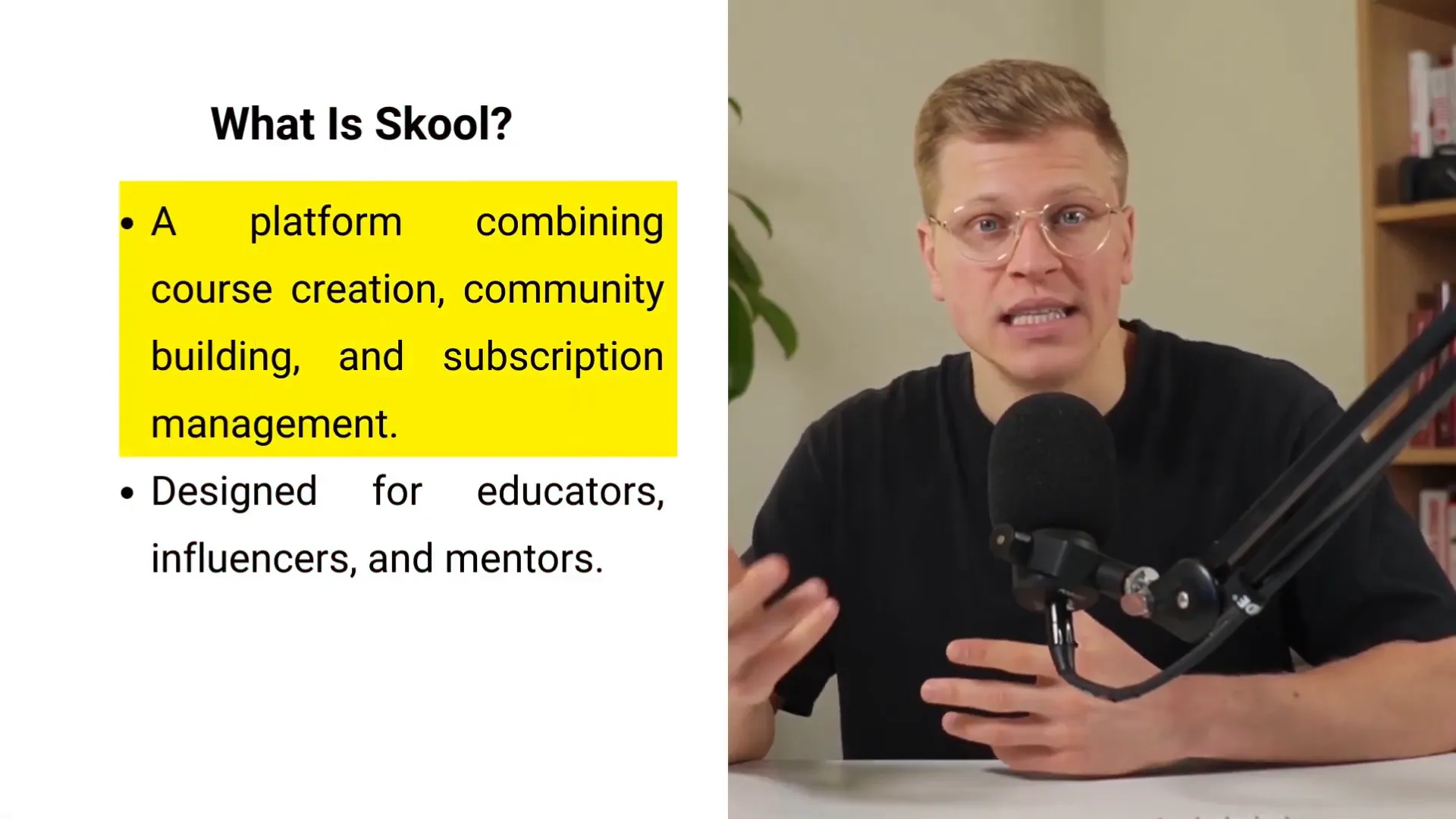
Key Features of Skool
- Streamlined Course Creation: Skool’s intuitive drag-and-drop course builder allows creators to effortlessly upload videos, structure lessons, and add interactive quizzes. This means you can focus on content quality without worrying about complex technical setups.
- Dynamic Community Engagement: At the heart of Skool is its robust community platform, where creators can initiate discussions, create polls, and encourage collaboration among members. This fosters a loyal and engaged audience.
- Flexible Monetization: Whether you want to sell courses one-time or offer recurring memberships, Skool supports multiple revenue models, allowing you to tailor your offerings to your audience’s preferences.
- Comprehensive Analytics: Skool provides detailed insights into engagement metrics, course completion rates, and membership growth, enabling creators to refine their strategies and maximize impact.
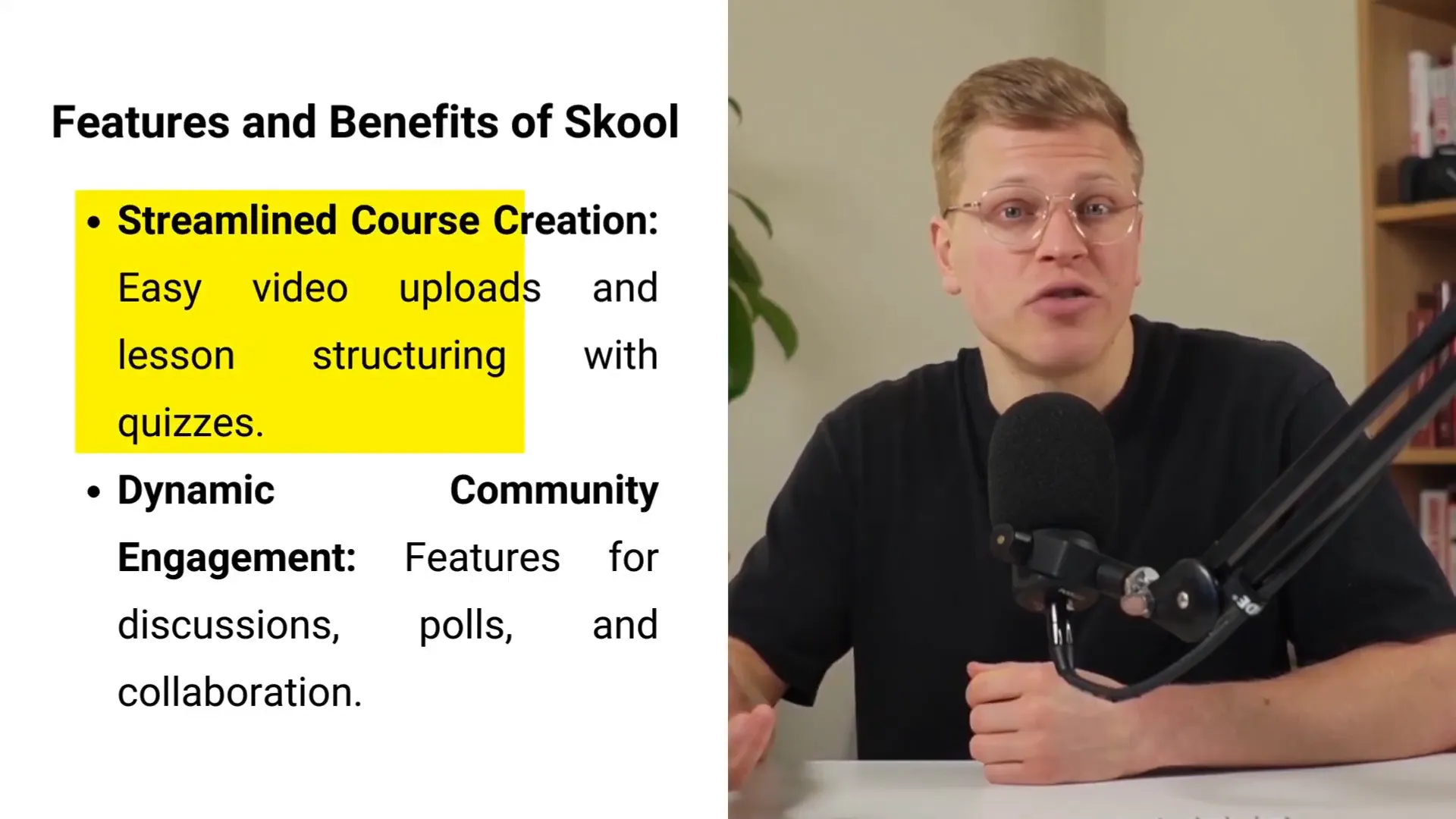
Why Choose Skool?
Skool’s all-in-one approach means you don’t need to juggle multiple tools to manage your online courses and community. Its design prioritizes ease of use and accessibility, ensuring even creators with limited technical skills can launch and grow their digital presence effectively.
Many creators who have switched to Skool from other platforms report a significant boost in community engagement, thanks to the platform’s integrated discussion forums and interactive features. The seamless blending of course content and community interaction leads to a more rewarding experience for both creators and learners.
Step 2: Skool Pricing – What Does It Cost?
Skool offers a transparent and straightforward pricing model. For a flat rate of $99 per month, creators gain full access to all features, including unlimited courses and community members. This simple pricing structure makes Skool accessible for creators at various stages of their journey, from beginners to established entrepreneurs.
Unlike platforms that charge per user or course, Skool’s flat rate promotes scalability, allowing your community and course offerings to grow without worrying about escalating costs.
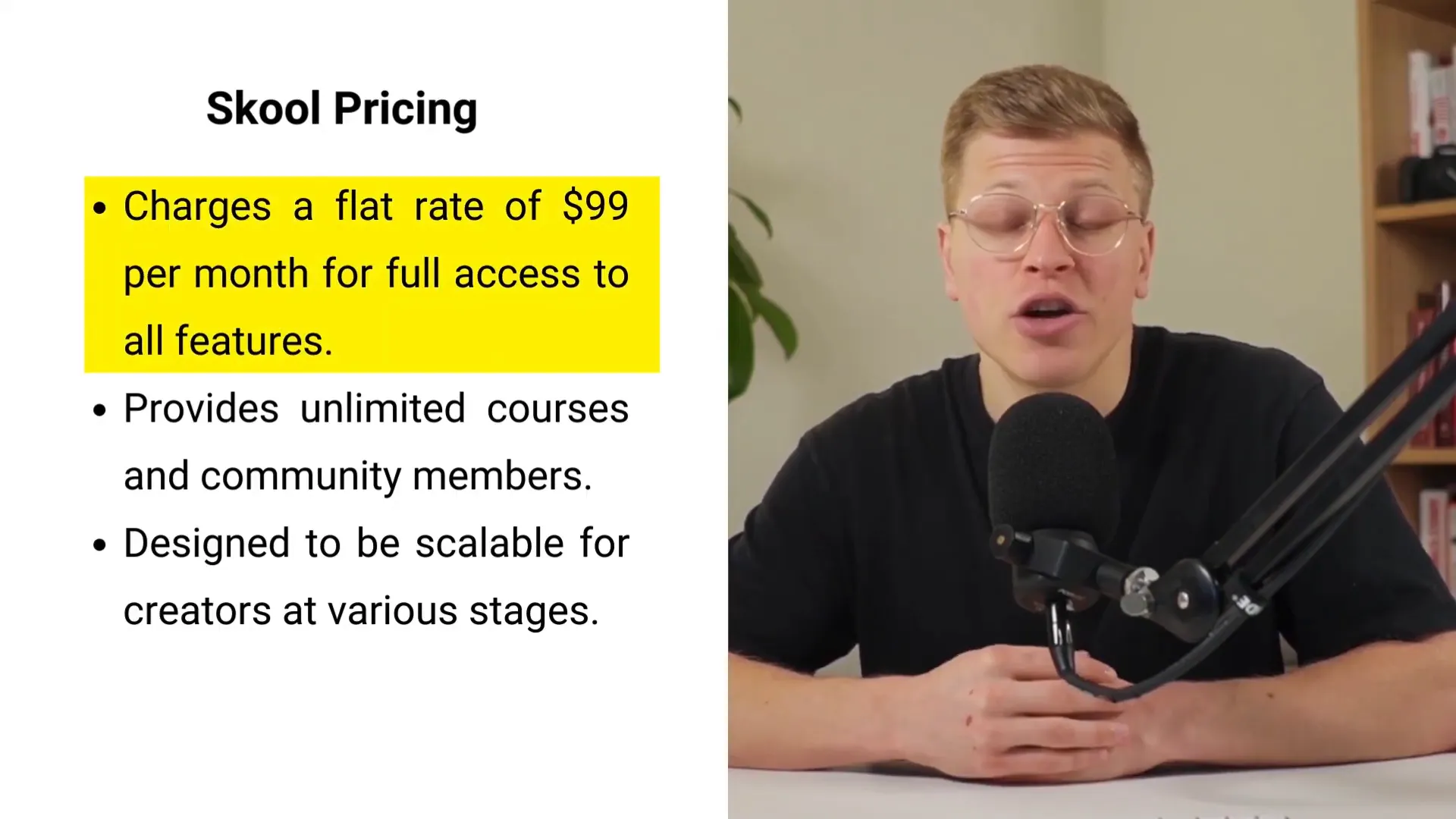
Step 3: Real User Experiences with Skool
Feedback from creators who have transitioned from ClickFunnels or other platforms to Skool highlights the transformative impact on their community engagement and course delivery. Here are some common themes:
- More Connected Communities: Users appreciate how Skool’s discussion forums and interactive features promote deeper relationships between members.
- Higher Engagement Rates: The integration of course materials with community conversations leads to more active participation and collaboration.
- Simplified Management: Creators find it easier to manage their courses and memberships within one platform, reducing the need for multiple tools.
Overall, Skool is praised for creating a more immersive and interactive learning environment, which benefits both creators and their audiences.
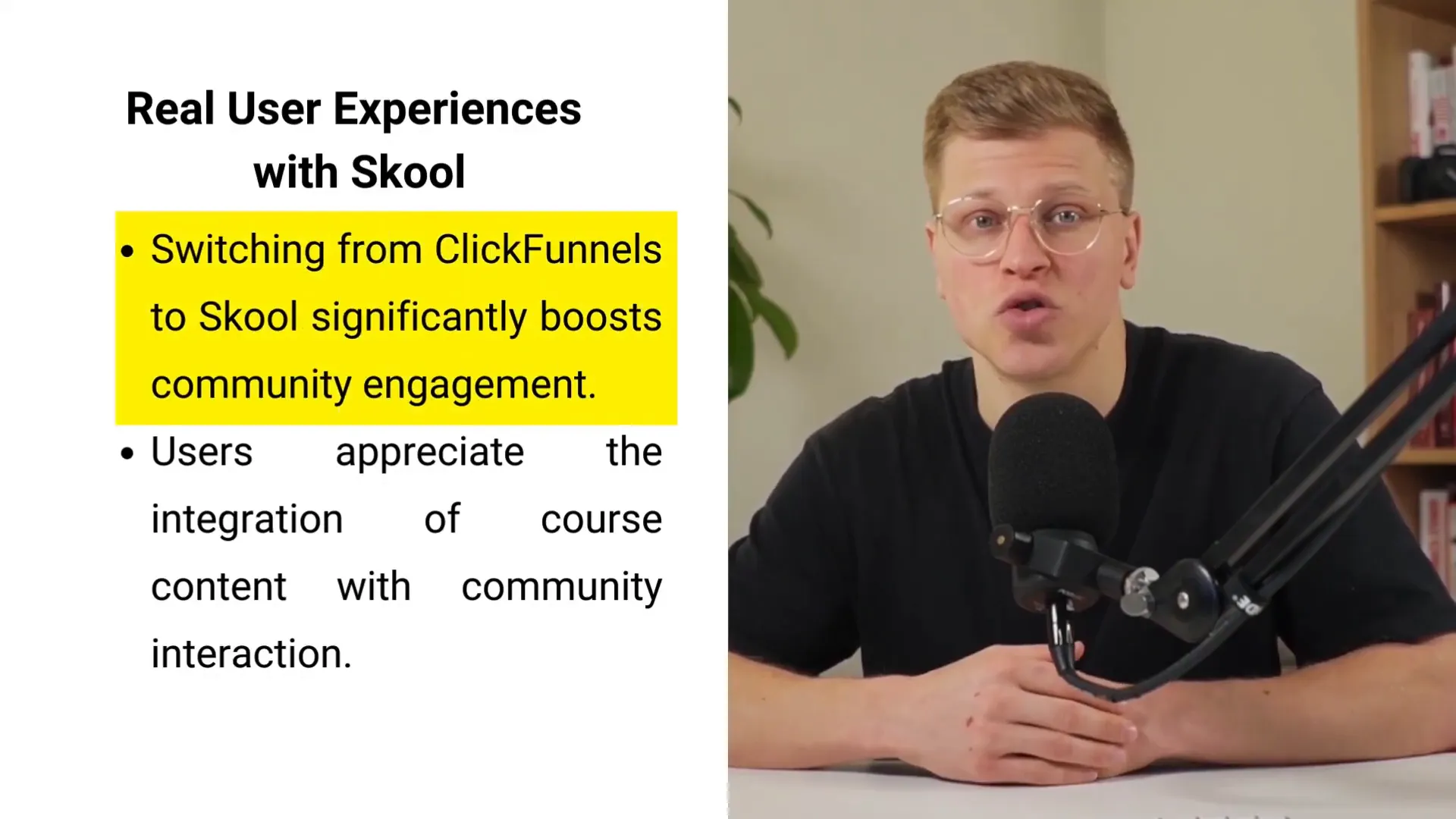
Step 4: Understanding Clickfunnels and Its Core Strengths
ClickFunnels was founded in 2014 by Russell Brunson and Todd Dickerson with the goal of simplifying the complex process of creating sales funnels. Their vision was to build a platform that combined ease of use with high effectiveness in converting online traffic into sales.
Unlike Skool, which is tailored toward educators and community builders, ClickFunnels targets businesses and entrepreneurs focused on generating leads and driving sales through marketing funnels. It offers an intuitive design packed with marketing tools that help users capture leads, create sales pages, and manage funnels without needing extensive technical expertise.
ClickFunnels’ Unique Selling Points
- Funnel Creation Made Simple: ClickFunnels provides drag-and-drop funnel builders that let you design sales processes quickly and efficiently.
- Lead Generation Focus: The platform is optimized for capturing leads and moving prospects through the buyer’s journey.
- Marketing Automation: ClickFunnels integrates with email marketing and other tools to automate follow-ups and conversions.
- Wide Range of Templates: Users can access a vast library of pre-built funnel templates tailored for various industries and goals.
ClickFunnels’ strength lies in its ability to maximize immediate conversions and sales, making it a go-to platform for product-centric businesses with a strong focus on marketing.
Step 5: ClickFunnels Pricing – What Are Your Options?
ClickFunnels offers three main plans, each with monthly and annual payment options. Here’s a breakdown of the costs:
- Basic Plan: $147 per month if paid monthly, or $127 per month if paid annually.
- Pro Plan: $197 per month monthly, or $157 per month annually.
- Funnel Hacker Plan: $297 per month monthly, or $208 per month annually.
Choosing to pay annually can save you a considerable amount, especially if you plan to use the platform long-term. Each plan offers different levels of access to funnels, pages, and other advanced features.
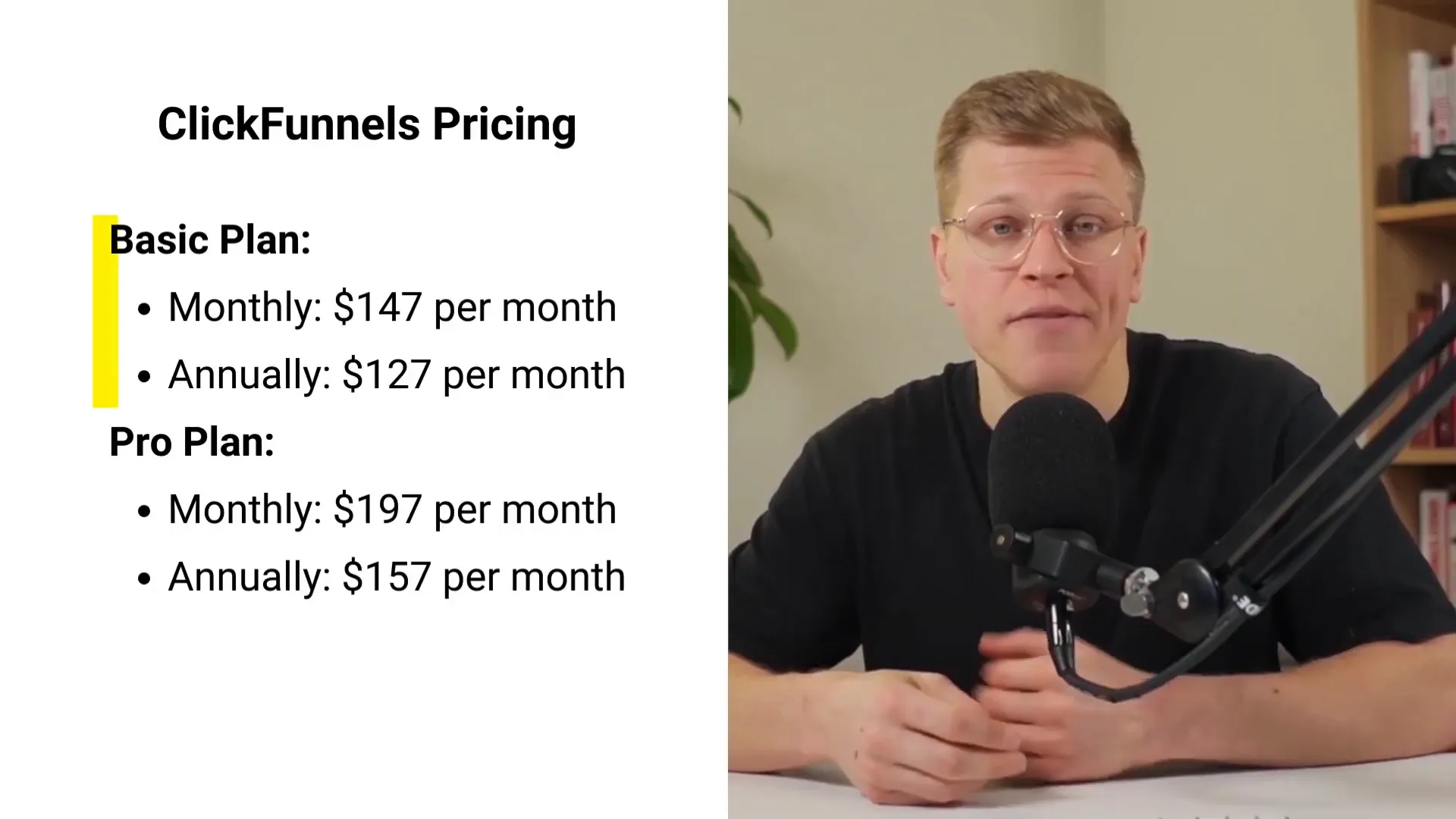
Step 6: Skool vs ClickFunnels – A Detailed Feature Comparison
To help you decide between Skool vs Clickfunnels, let’s explore a detailed comparison across critical areas:
Community Building and Engagement
Skool is explicitly built to foster and grow online communities. It offers tools that encourage member discussions, collaborations, and peer support. Features such as forums, live chats, and group activities keep the community vibrant and engaged.
In contrast, ClickFunnels focuses more on individual customer conversion rather than group interactions. While excellent at driving sales, it lacks dedicated community-building features, which means it’s less suited for creators who want to nurture a collaborative learning environment.
Content Delivery and Course Creation
Skool shines as an interactive course delivery platform. Creators can incorporate videos, quizzes, and discussions within their courses, engaging learners more deeply. The drag-and-drop course builder removes technical barriers, allowing creators to focus on producing high-quality content.
ClickFunnels, on the other hand, is primarily a marketing funnel builder. It lacks the infrastructure to host and manage educational content effectively. While you can embed videos and basic content, it doesn’t provide the rich, interactive learning experience that Skool offers.
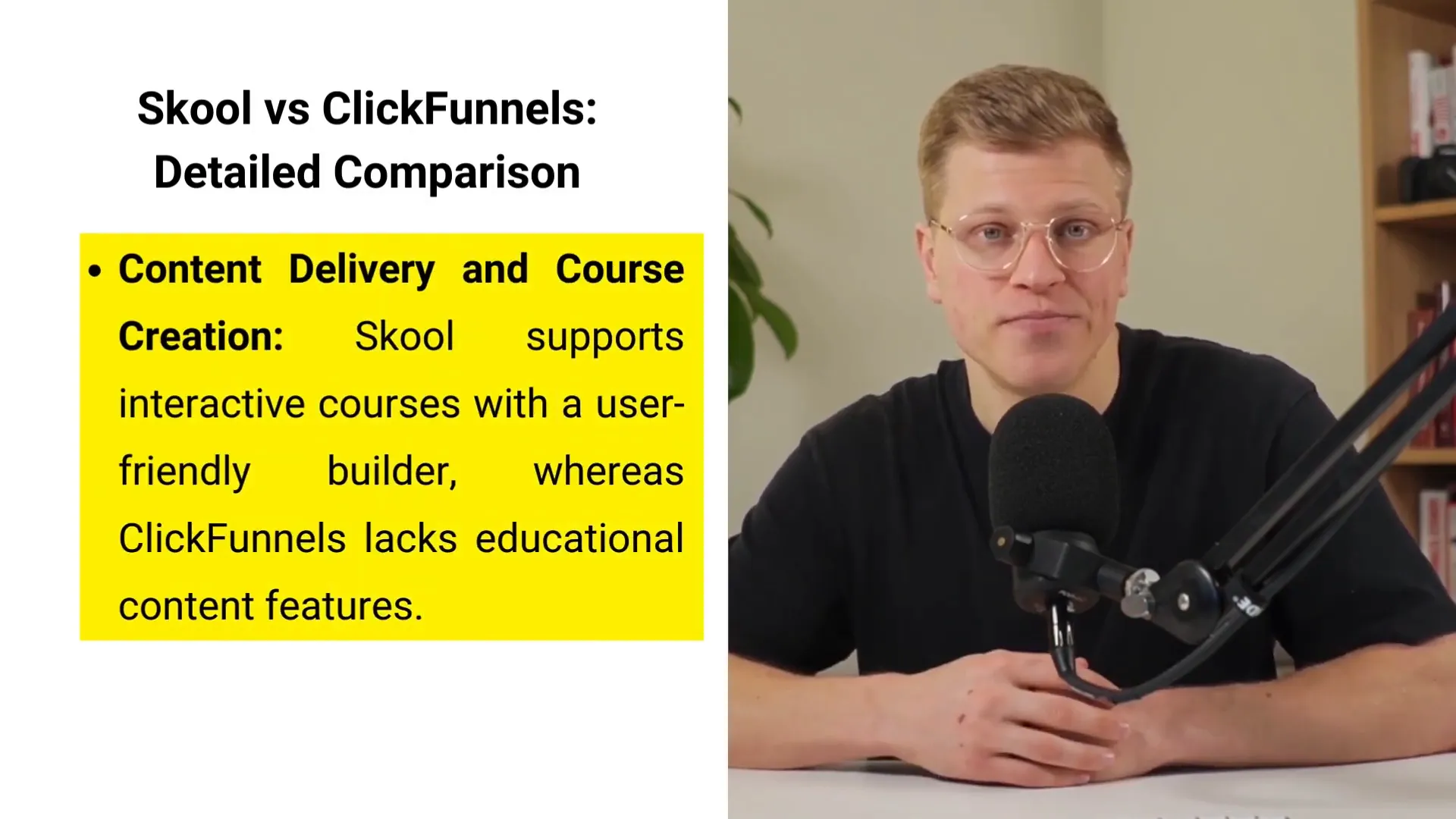
Monetization and Revenue Generation
Both platforms allow monetization but cater to different business models. Skool supports building a value-driven community where subscriptions and direct course sales generate revenue. This model emphasizes long-term engagement and recurring income from a loyal audience.
ClickFunnels excels in creating efficient sales funnels that maximize immediate conversions and sales. It suits businesses that rely on direct marketing tactics and quick customer acquisition, moving prospects swiftly through the sales process.
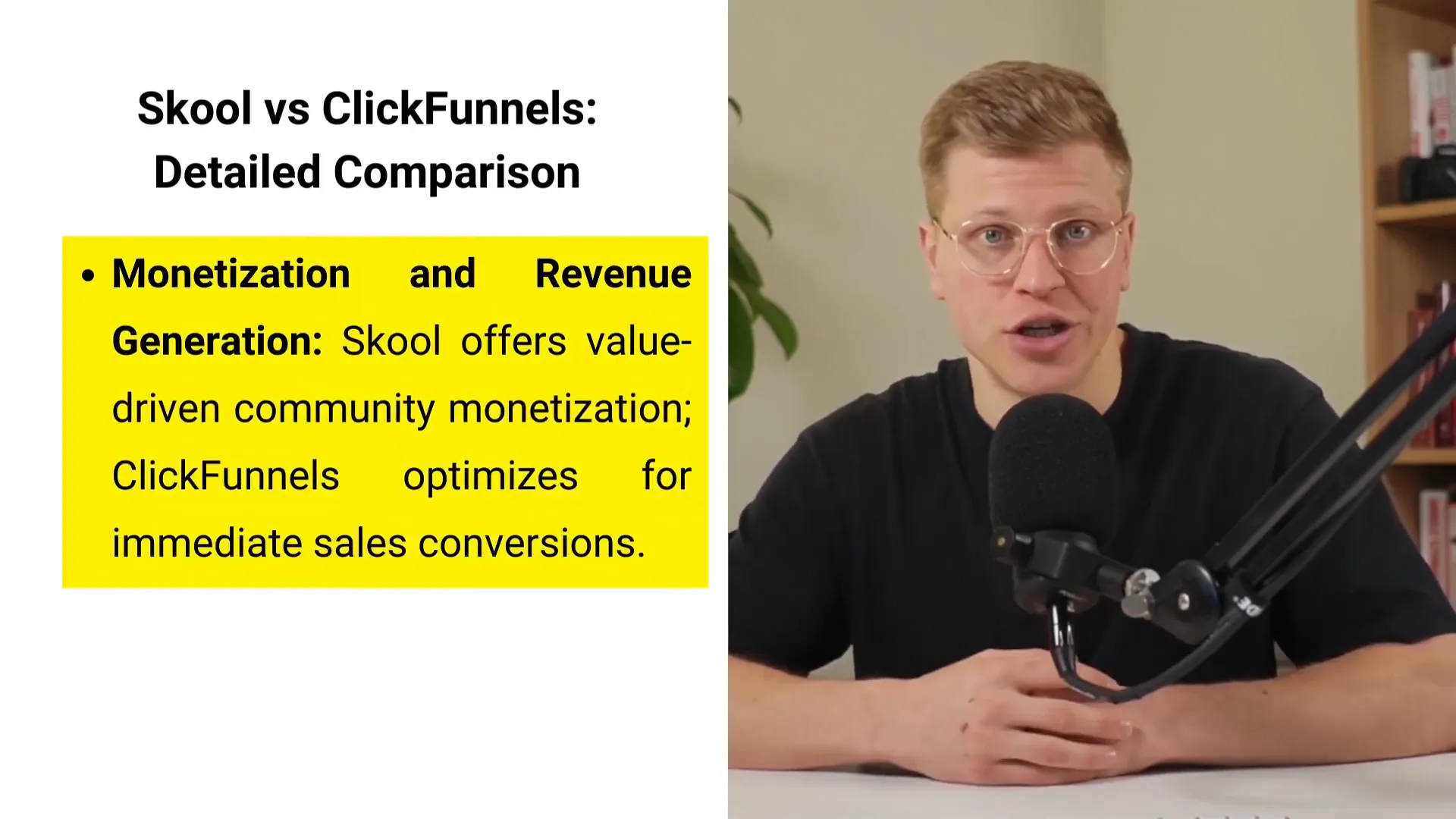
User Experience and Accessibility
Skool prioritizes a seamless user experience for both creators and their audiences. Its clean, intuitive interface reduces learning curves, making navigation straightforward even for users with limited technical skills. This accessibility fosters a conducive environment for learning and interaction.
ClickFunnels, while powerful for marketing, has a user interface designed with marketers in mind, focusing heavily on conversion metrics and sales data. This can make it less intuitive for purposes outside of marketing, such as education or community engagement.
Step 7: Which Platform Should You Choose?
Choosing between Skool vs Clickfunnels ultimately depends on your primary goals and the type of relationship you want to build with your audience.
- Choose Skool if: You are focused on building and nurturing an online community around your educational content. Skool’s integrated approach to course creation, community engagement, and subscription management offers a unique blend of features designed to foster learning, interaction, and long-term loyalty.
- Choose ClickFunnels if: Your priority is generating leads and driving sales through sophisticated marketing funnels. ClickFunnels remains a robust choice for businesses focused on product sales, immediate conversions, and marketing automation.
Both platforms have their strengths, and your choice should align with your business model, audience needs, and long-term vision.
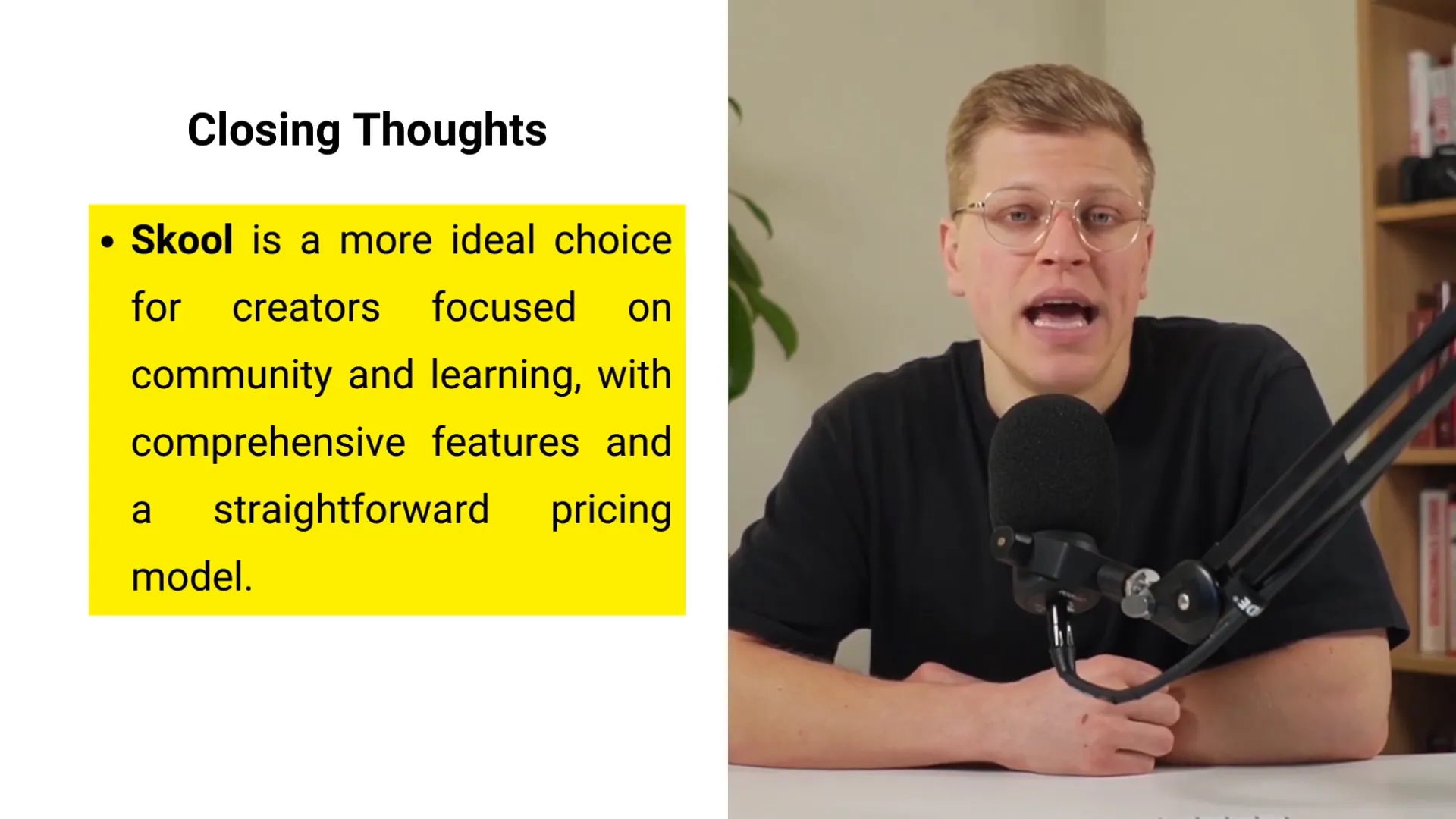
Step 8: Getting Started – Tips for Signing Up
If you’re ready to dive in, consider using affiliate links provided by trusted creators to support their work at no extra cost to you. Signing up through such links often grants you access to exclusive bonuses or resources.
Before committing, take advantage of free trials or demos offered by both platforms to get a hands-on feel for their interfaces and features. This will help ensure you choose the platform that truly fits your workflow and audience engagement style.

Frequently Asked Questions (FAQ)
1. Can I use Skool and ClickFunnels together?
Yes, many creators use ClickFunnels for marketing and lead generation funnels, while hosting their courses and communities on Skool. This combination leverages the strengths of both platforms.
2. Which platform is better for beginners?
Skool tends to be more beginner-friendly for educators and community builders due to its simple interface and all-in-one features. ClickFunnels can have a steeper learning curve, especially for those new to sales funnels and digital marketing.
3. Can I host live webinars on Skool or ClickFunnels?
Neither platform natively hosts live webinars, but both can integrate with third-party tools like Zoom or WebinarJam to facilitate live sessions.
4. How does Skool handle course updates?
Skool allows creators to easily update course content, add new lessons, and manage quizzes dynamically, ensuring learners always have access to the latest information.
5. Does ClickFunnels support subscription-based memberships?
ClickFunnels supports membership sites, but its primary strength lies in sales funnel creation. For robust membership management, additional integrations or platforms might be needed.
6. Which platform offers better analytics?
Both provide analytics, but Skool focuses on engagement metrics related to courses and communities, while ClickFunnels emphasizes sales funnel performance and conversion tracking.
7. Is there a free trial available for Skool or ClickFunnels?
ClickFunnels typically offers a 14-day free trial. Skool’s trial availability can vary, so it’s best to check their official site or affiliate links for current offers.
8. Can I migrate my existing courses or communities to Skool?
While Skool supports importing content, migrating communities may require manual effort depending on the platform you’re moving from. It’s advisable to consult Skool’s support for assistance.
Conclusion
The choice between Skool vs Clickfunnels boils down to your primary objectives as a digital creator or business owner. If your goal is to build an engaged, interactive community around your courses and foster long-term relationships, Skool offers a powerful, user-friendly platform tailored for this purpose.
Alternatively, if your focus is on driving sales, capturing leads, and automating marketing funnels, ClickFunnels remains an industry leader with a comprehensive set of tools designed to maximize conversions and revenue.
By understanding the unique strengths and pricing models of each platform, you can confidently select the best tool to grow your digital presence in 2025 and beyond.
Remember, many successful creators combine both platforms to leverage their respective advantages—using ClickFunnels for marketing and Skool for community and course delivery.
Whichever path you choose, invest time in learning the platform and engaging authentically with your audience to build a thriving digital business.
Ready to Build Your Skool Community?
Start your 14-day free trial today and turn your expertise into a thriving, profitable community that members love.
Start Free Trial